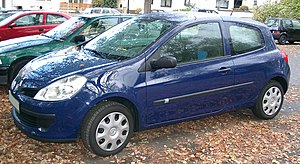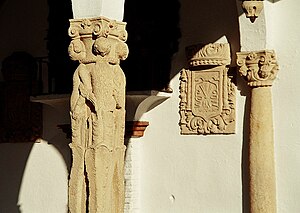Set in the heart of Andalucía, in the beautiful Serranía de Ronda mountains. Its gorge—El Tajo—is a 360 foot drop of breathtaking beauty. The New Bridge (Puento Nuevo) was built in 1751 and still supports cars and tourists and still displays the glory of this countryside.
 |
| View from Puento Nuevo |
After walking over the bridge, I travelled down to the bottom of the gorge along a dirt path with no guard rails to the Jardines de Cuenca—a feat unacceptable in the US. Worth every breathtaking step (literally). Stunning.
 | |
| Puento Nuevo from the Jardines de Cuenco |
In Moorish town, behind tiny (two way) streets that barely fit one mini European car, lay the city walls. Walking through arches and down cobbled steps, we arrived at the Arab baths. These were well preserved—used during Arab occupation for hygiene as well as socialization. From here, you can get a faboulous view of the old bridge (a relative term)—also still in use.
 |
| The Bullring |
The bullring, a quarter of a mile down the road, birthed the “art” of bullfighting in Spain. It originated as a training grounds for soldiers and has developed into an art form. The fight takes place in three acts: the first is a parade, the second a lot of fancy tricks by the matador, the third features the kill. And the kill is barbaric. Picadors pick the bull with darts to “drain” the stress of the journey and the matador, with a curved blade, must stab the bull in the precise spot to kill it instantly. In Ronda, only one bullfighter died in the ring and his remains were buried there.













